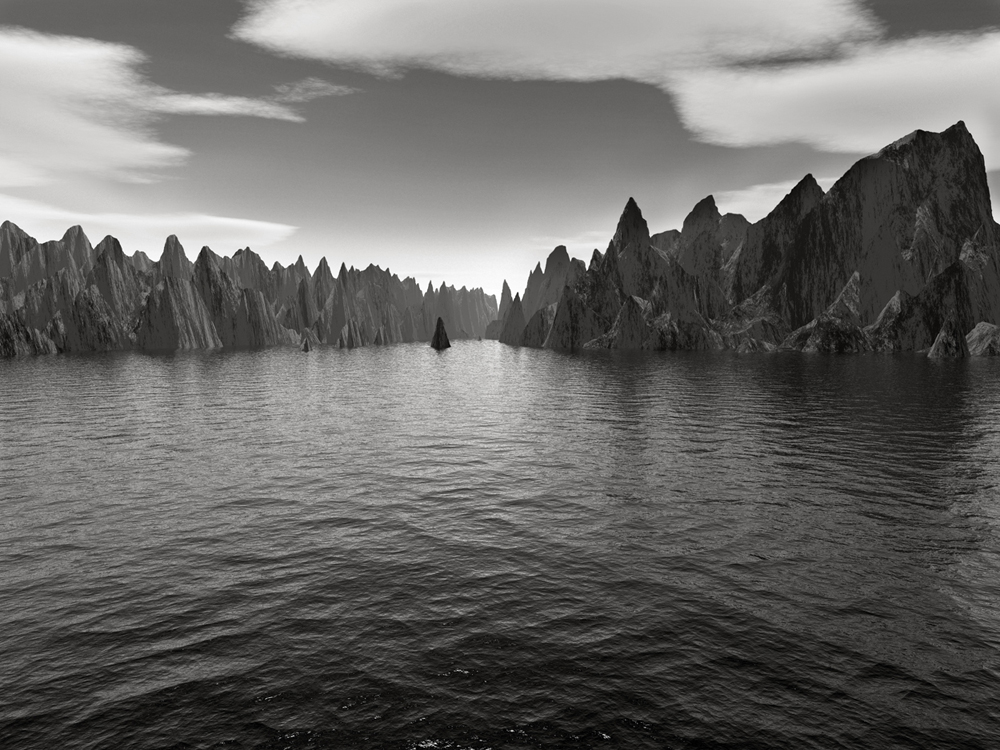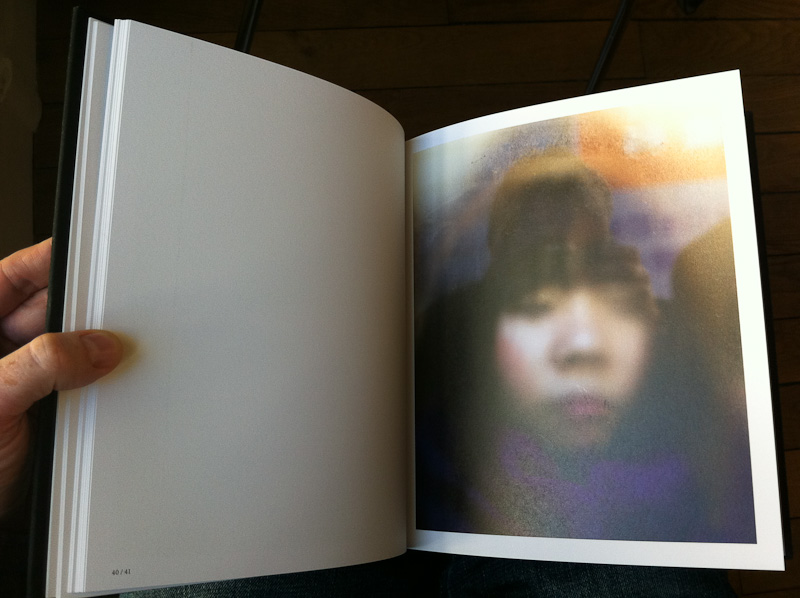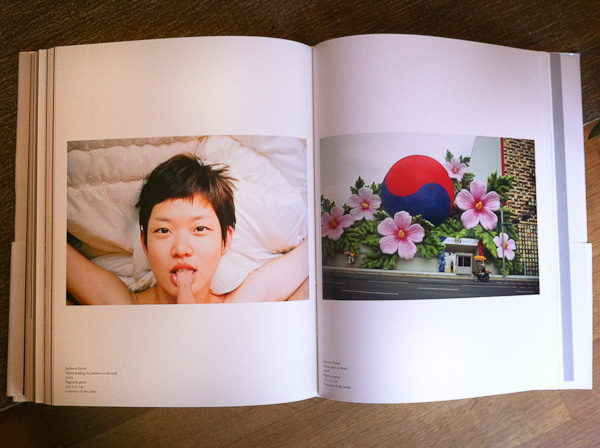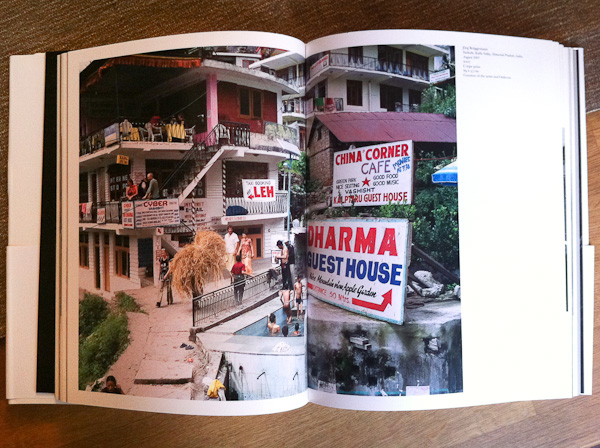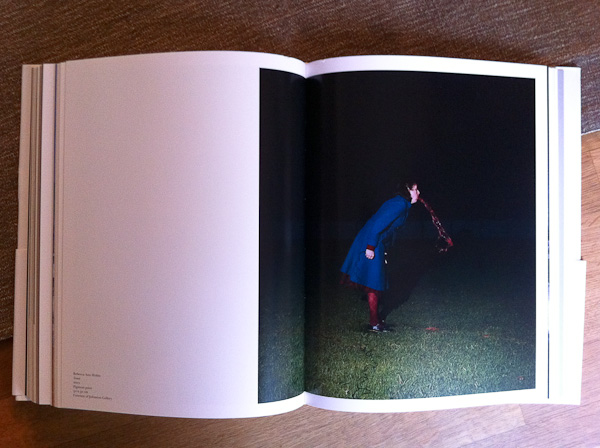 I first came across Joan Fontcuberta's Orogenesis series when I picked up a copy of the Landscapes without memory book in Arles last year. The series is deceptive; these aren't photographs but computer-generated images created by software renderers that are designed to produce 3D images based on cartographical data. Fontcuberta decided to explore the possibilities of the technology by feeding it misinformation: instead of giving it a map to read, he fed it the visual data contained in famous paintings or pictures of different parts of his anatomy. The results are these "landscapes without memory."
I first came across Joan Fontcuberta's Orogenesis series when I picked up a copy of the Landscapes without memory book in Arles last year. The series is deceptive; these aren't photographs but computer-generated images created by software renderers that are designed to produce 3D images based on cartographical data. Fontcuberta decided to explore the possibilities of the technology by feeding it misinformation: instead of giving it a map to read, he fed it the visual data contained in famous paintings or pictures of different parts of his anatomy. The results are these "landscapes without memory."
The thing I like the most about Fontcuberta is his ability to explore philosophical questions on the nature and contemporary practice of photography while remaining engaging and frequently hilarious. I did this interview with him for the Landscapes without memory exhibition which has just opened at Foam in Amsterdam (until 27 February 2011).
Marc Feustel: How did you first encounter photography and what was it that attracted you to the medium in particular?
Joan Fontcuberta: It was in high school. Our art history teacher was a photo amateur and set up a darkroom for his pupils. The magic of photo processing immediately fascinated me. My father ran an advertising agency and I was also very curious about the world of models, photographers, filmmakers and so on. During the holidays I spent time watching and learning at the agency. Later on I joined the creative department of the agency and worked there for three years. At the same time I was studying at university: sociology, communications, semiotics… With that background what used to be an exciting passion became a more serious thing: a way to understand my physical and cultural environment.
MF: You have said that photography should not only be taught in fine art schools from an aesthetic perspective but in the context of philosophy as a tool for critical thought. In your view, is this critical thought something that is lacking in contemporary photography?
JF: I have noticed a perverse phenomenon in contemporary art: artists abdicate their discourse to critics and curators. Their work then just becomes an illustration of someone else’s discourse. Maybe that is the price they have to pay to achieve some form of recognition in the art scene or market. Luckily there are exceptions. Presently I am very curious about ‘found’ and ‘trash’ photography and could mention the names of Joachim Schmid, Penelope Umbrico and Erik Kessels. There are many other intelligent, radical voices in other approaches as well… I am optimistic. Regarding critical thought, Marcel Proust said: “Le véritable voyage de découverte ne consiste pas à chercher de nouveaux paysages, mais à avoir de nouveaux yeux.” (“The true voyage of discovery does not consist of searching for new landscapes, but of having a new pair of eyes.”
MF: The images in Landscapes without memory are created by using three-dimensional imaging software designed to render landscapes based on maps. Can you explain a little about the process for making these images and how you discovered the software that you used to make them?
JF: I used several 3D renderers (if you search Google you will find dozens of them). I discovered them in the Banff Center for the Arts, in Canada, in 1994, where I was invited to lead an art residency on the concept of “The Transient Image”: an international gathering of visual artists exploring the mutations of technological image making. There I learned about virtual reality technologies and became fascinated by the possibilities they offer to build illusionary spaces. It was an ironic paradox that a center located in a national park in the Rocky Mountains, surrounded by such magnificent virginal nature, went to that much effort creating virtual models of invented nature. In any case, all this software functions on the same principle: cartographic data is translated into a 3D relief. However, I deceived the computer and instead of inputting a map, I input a masterpiece of landscape painting or photography. The software is constrained to output a landscape, whatever the input. It must produce an image within a vocabulary of limited terms: mountains, volcanos, valleys, rivers, oceans… And this is the point: a landscape is recycled into another landscape. This subversion unveils another gesture: we make computers to produce hallucinations, we push technology to let its own unconscious emerge.
MF: Since the New Topographics, landscape photography has occupied a growing space in the world of fine art photography. But contemporary landscape photography seldom depicts the beauty of 'natural' landscapes, like the work of Ansel Adams for example. Is there still a place for photography that celebrates the beauty of the natural landscape?
JF: This is a debate about beauty within aesthetic categories. Of course there is a place to celebrate the beauty of the natural landscape—as currently happens in postcards and calendar plates. The question is which kind of beauty are we interested in? Should art just provide visual pleasure or should it rub our eyes with sandpaper to disturb our conscious and provoke a reaction? The philosopher Eugenio Trías believes that the sublime substituted beauty, and that the sinister has then substituted the sublime. This notion of sinister derives from Freud’s “Umheimlich” and refers to a sense of distortion and oddity. I wonder if we are now experiencing a mutation towards a new, hybrid category. I have in mind a sentence by Picasso: “The ugly may be good; the beautiful will never be”. He meant that something considered beautiful conforms to a standard taste, whereas something considered as ugly may confront our present sensibility and bring out a new one.
MF: Contemporary landscape photography often focuses on the tension between man and nature. However what we are seeing in this series appears to be ‘pure’ nature, with no trace of man whatsoever, and yet these images are entirely artificial, a man-made fantasization of nature. How did you develop the approach to this series?
JF: Many of my projects deal with landscape, or how landscape should be understood today. For instance, in Securitas I borrow keys from people and project them onto photographic paper. The result is a horizontal line simulating a mountain ridge. It is a minimalist idea which epitomizes the essence of landscape as related to safety and property. Thus landscape can be defined by ideological and political approaches, rather than aesthetic ones based on a resemblance to nature.
Now let’s go back to the roots of landscape as an autonomous genre. Until the seventeenth century, natural space was just a subordinate background for portraits or historical scenes. The birth of landscape inverted the established visual order of things, giving priority to that which had been traditionally considered merely as escenography. Landscape painting has only been recognized quite recently, when artists achieved the right to contemplate nature without the justification of human anecdotes. To contemplate nature without, let’s say, being seen. In my Orogenesis landscapes nobody looks at us, they are brand new and consequently exempt of human experience. On the other hand, they constitute a sort of postmodern statement: they illustrate that the representation of nature no longer depends on the direct experience of reality, but on the interpretation of previous images, on representations that already exist. Reality does not precede our experience, but instead it results from intellectual construction.
An additional concern in Orogenesis is artificiality and more precisely artificial nature. Let’s ask ourselves the question: could a natural nature exist? The answer is no, or at least, not anymore: man’s presence makes nature artificial. Until the sixth day, Creation was natural, but at the seventh it turned into an artifice.
MF: With the proliferation of digital technology, more still photographs are being made than ever before, despite advances in other media like video. Do you think that people would still be as attached to photography if it were no longer perceived as a document of reality?
JF: Yes, certainly. Photography is dissolving into the magma of images. It is losing its historical specificity, but is beginning to fulfil other functions. I just published a book titled Through the Looking Glass about cell phone photos and their circulation through the Internet and online social networks. Teenagers are not interested in photographs as documents but as trophies. When Martians finally invade the Earth, green lizard-shaped aliens will emerge from their spacecrafts. They will fire at us with laser guns but we won’t hide nor protect ourselves. We’ll take our cell phones and we’ll photograph them to prove that we saw them, to prove that we were there when they arrived.
MF: Interestingly all the images in Orogenesis depict incredibly dramatic, over-the-top landscapes. Is the software capable of depicting an unremarkable landscape, like an empty field or a barren wasteland?
JF: Sure. However if you keep the default settings the software is endowed with an unconscious model oriented towards spectacular landscapes, something that should make us reflect on its inherent ideology. There is a glorification of the mountains as symbols of spiritual achievement and purification. I exaggerate that feeling because the resulting wild and imposing landscapes must be read as a parody. Somehow that excessive sense of drama leads to a sense of kitsch, or is reminiscent of the ahistorical landscapes of computer games through which players travel in search of predetermined adventures.
MF: Can you explain a little about the significance of the title ‘Landscapes without memory’ and the absence of memory in these landscapes?
JF: There has been a common strategy in contemporary art focusing on landscape as depictions of territories where a tragic event occurred in the past. The place is presented metonymically as a remnant of the event itself, it wouldn’t interest us without the history behind it. So usually landscapes exist because they hold those layers of memory. However, Orogenesis displays landscapes beyond the influence of time, frozen in an uncertain geological age, without any trace of culture or civilization. There is no echo in them, no voices or shouting that have vanished into the continuity of life and oblivion. There is nothing to commemorate there, nothing to remember. A kind of ‘degree zero’ terrain. Thus, they are landscapes without memory—well, with the exception of the memory of art.
MF: Humour is less obviously present in this series, but in general it appears to be an important aspect of your work. What role does it play in your photographic practice?
JF: Let’s go back to classics: “Castigat ridendo mores” (“One corrects customs by laughing at them”): that was the Latin motto for comedy. I belong to a Mediterranean hedonist sensibility—which might be the contrary of a Calvinist one. There is an illustrative folk saying: “Good girls go to Heaven; bad girls go to everywhere”. Humour is not only an ingredient to enjoy life, on the same level as good weather, wine, sex and fiesta as the cliché goes. A great deal of contemporary art is too solemn and boring. In my work humour is like a filter trying to put forward serious proposals but in an appealing and exciting manner. Laughter is a revolutionary impulse, the great antidote to the poisons of the spirit. As Nietzsche said: “We should consider every day lost on which we have not danced at least once. And we should call every truth false which was not accompanied by at least one laugh”.


